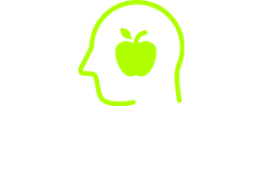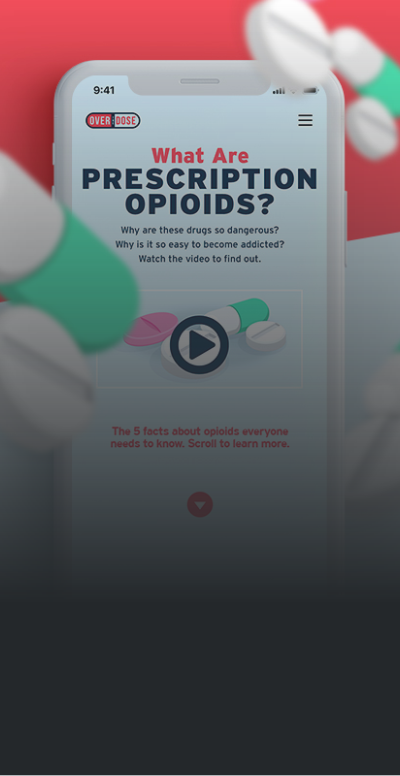Case Study

A youth obesity prevention campaign developed for teens in Oklahoma.
Audience Insights
FORMATIVE RESEARCH
In our formative research with 400+ Oklahoma teens (13-18), we found:
• Overall, teens want to be healthier, and teens who are overweight reported high levels of intent to change their behaviors in the next seven days.
• Teens in rural areas were found to be significantly more likely than urban teens to report that they drank soda two or more times per day.
• Rural teens were also more likely to have fewer food options and less fresh produce due to the distances they have to travel for groceries and the selections available in their locations.
• Among all teens, the most common reasons for not eating fruit and vegetables in the past seven days were that they didn’t think about eating them and because their family did not buy them.
• Teens were motivated by facts linking healthier beverage choices with increased energy, alertness, and brain performance.
• Facts linking obesity to impacts on fitness and sports performance motivated overweight teens to eat more fruits and vegetables.
In our formative research with 400+ Oklahoma teens (13-18), we found:
• Overall, teens want to be healthier, and teens who are overweight reported high levels of intent to change their behaviors in the next seven days.
• Teens in rural areas were found to be significantly more likely than urban teens to report that they drank soda two or more times per day.
• Rural teens were also more likely to have fewer food options and less fresh produce due to the distances they have to travel for groceries and the selections available in their locations.
• Among all teens, the most common reasons for not eating fruit and vegetables in the past seven days were that they didn’t think about eating them and because their family did not buy them.
• Teens were motivated by facts linking healthier beverage choices with increased energy, alertness, and brain performance.
• Facts linking obesity to impacts on fitness and sports performance motivated overweight teens to eat more fruits and vegetables.
Behavior Change Approach
-
NUTRITION EDUCATION FOR URBAN AND RURAL TEENS
Swap Up delivers educational messages to encourage urban and rural teenagers (13-18) to make healthier nutritional choices and provides free-to-order educational materials supporting the healthy behaviors. Leveraging our proprietary SAVI Messaging model, Swap Up gives teens Specific, Acceptable, Viable, and Impactful ways to eat healthier that fit into their daily lives. These messages reduce the burden of figuring out how to eat healthy by providing real-life swaps.+ expand - collapse
The initial messaging for Swap Up focused on the benefits of drinking water and how water can improve physical performance. In formative research, both urban and rural teens valued sports and being active. The messaging strategies focused on showing teens how drinking water—rather than sugary sports drinks—can increase their athletic performance. Additional statewide messages went a step further to illustrate how drinking water and eating fresh produce can give teens more energy and help them think more clearly. It provided healthy food swaps teens can make when at convenience stores or fast food restaurants. Different ads were made to appeal to urban and rural teens.
Implementation Strategy
-
PAID MEDIA
The Swap Up Campaign delivered educational messaging to the target audience through traditional media buys for television and radio. These ads drove awareness of the educational health messages for urban and rural teens, all channels worked together to deliver coordinated messages and created a surround-sound effect. All ads directed teens to the interactive website to further engage with the health messages.+ expand - collapse
SOCIAL AND DIGITAL MEDIA
The campaign’s primary social media channel, Instagram, increased awareness for the Swap Up brand and sparked conversation among teens. Both Instagram and Facebook increased visibility of the health messages and provided a variety of ways for the audience to interact with the messages through ad types like Promoted Posts, Video and Conversion ads.
Snapchat delivered video views and awareness of the message, and its full-screen inventory created a great opportunity to captivate the audience without any other on-screen distractions. Content included ad types such as Video and Conversion ads. YouTube brought visibility and engagement through video ads while the audience consumed content on this platform, reaching those in the moment they may be engaging in sedentary activity. Our audience was targeted by their behavior on and off this platform, including browsing, viewing and app activity. This platform also included Connected TV placements.
INTERACTIVE WEB EXPERIENCES
The Swap Up campaign features an interactive, mobile-friendly website that gives teens specific recommendations for changing eating habits in a manner they can control, such as what sides they should eat at a restaurant, how to select healthy convenience store snacks, or choosing water over sugary drinks. The website provides an engaging way for teens to deepen their knowledge of nutritious options so they have what they need to make real-world decisions. This serves as a landing environment from multiple media channels, providing a direct path for the audience to consume more messaging.
One year post campaign launch, overall campaign awareness is high at 72%. The campaign was found to be relevant among 67% of participants, with 79% reporting the campaign provides information that can help them improve their nutrition. Additionally, teens who reported being aware of the campaign were significantly more likely to report that eating fruits and vegetables is more important to them and that if they were to drink more water they would perform better in physical activities compared to teens who were unaware of the campaign.




















